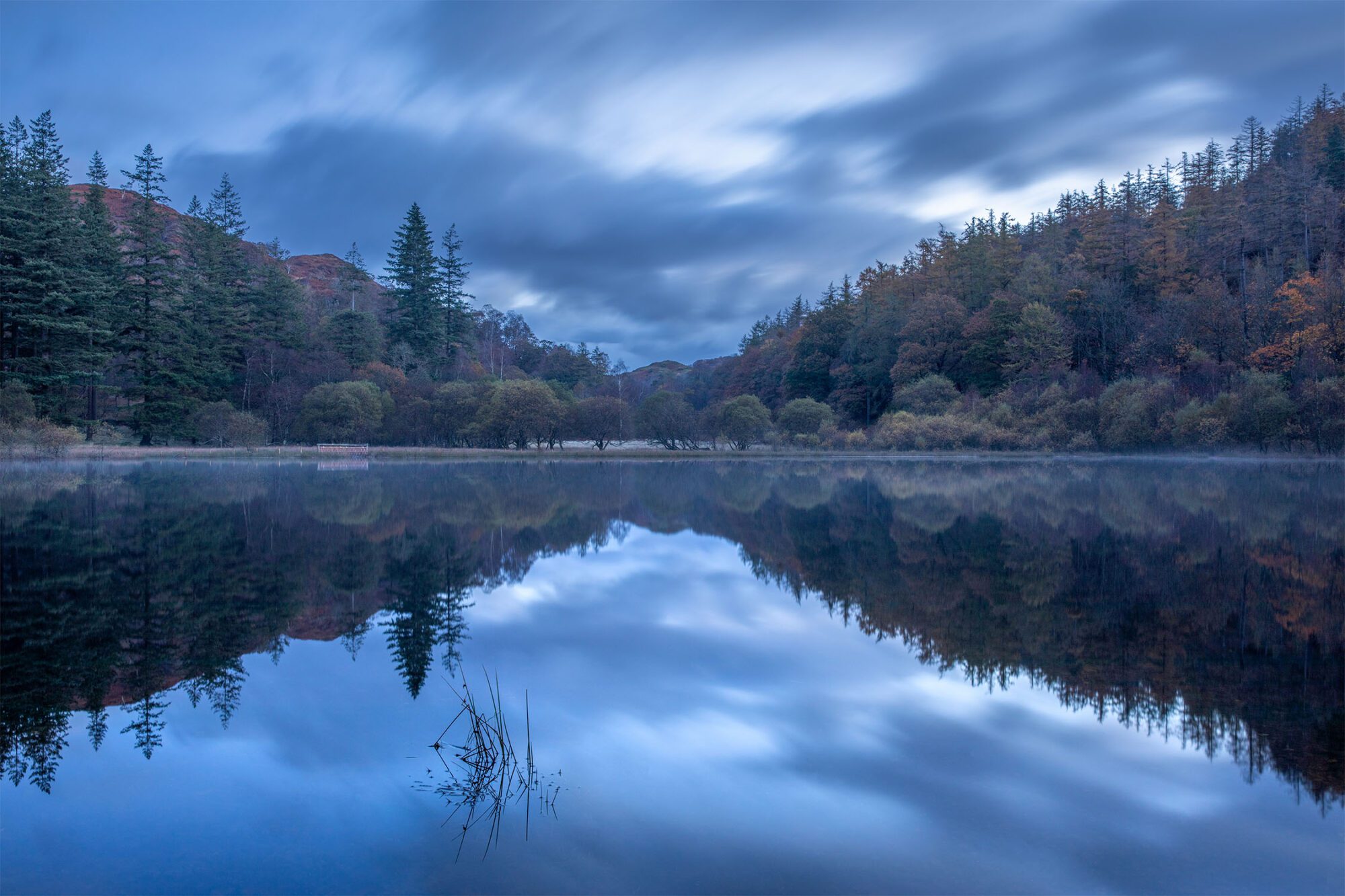The Lake District is one of England’s most treasured National Parks. Its sheer natural beauty is a landscape photography paradise. Within the Lake District National Park, you will find several stunning lakes, countless iconic mountain ranges, and miles upon miles of spectacular scenery. With so much to see and do, it is worth planning your trips to the Lake District to make the most of your time. However, this can be a little daunting if you are unfamiliar with the area. That said, I wanted to lend a helping hand and recommend a few of my favourite locations in the Lake District for landscape photography.
Pillar, Landscape Photography Heaven
Pillar is the eighth biggest mountain in the Lake District and reaches a height of 892m at its peak. Located between Wasdale and Ennerdale, Pillar is accessible from multiple directions, each providing breathtaking views. The ascent to Pillar’s summit isn’t particularly difficult, however, it is a fair distance to walk and will test your stamina. Travel lighter, if possible. It’s one of the lesser travelled mountains which is surprising given its incredible views.
Accessing Pillar
For this guide, we’ll assume you are starting from Wasdale Head. There are a couple of car parks at Wasdale Head, the Lake Head National Trust car park and the village green car park near the Wasdale Head Inn. From either car park, you’ll be heading behind the Wasdale Head Inn and up through Mosedale Valley. Walking through Mosedale Valley, you will quickly realise that you are surrounded by the daunting figures of Kirk Fell, Yewbarrow and Pillar at the far end of the valley. When you reach the back end of the valley, you will cross Gatherstone Beck. This can be tricky after rainfall, so watch your footing. Waterproof boots are a must! After successfully navigating Gatherstone Beck, you will advance upwards to Blacksail Pass and onwards to Pillar’s summit. All in all, you will be looking at a total distance of around 12km walking on a return trip to Wasdale Head.
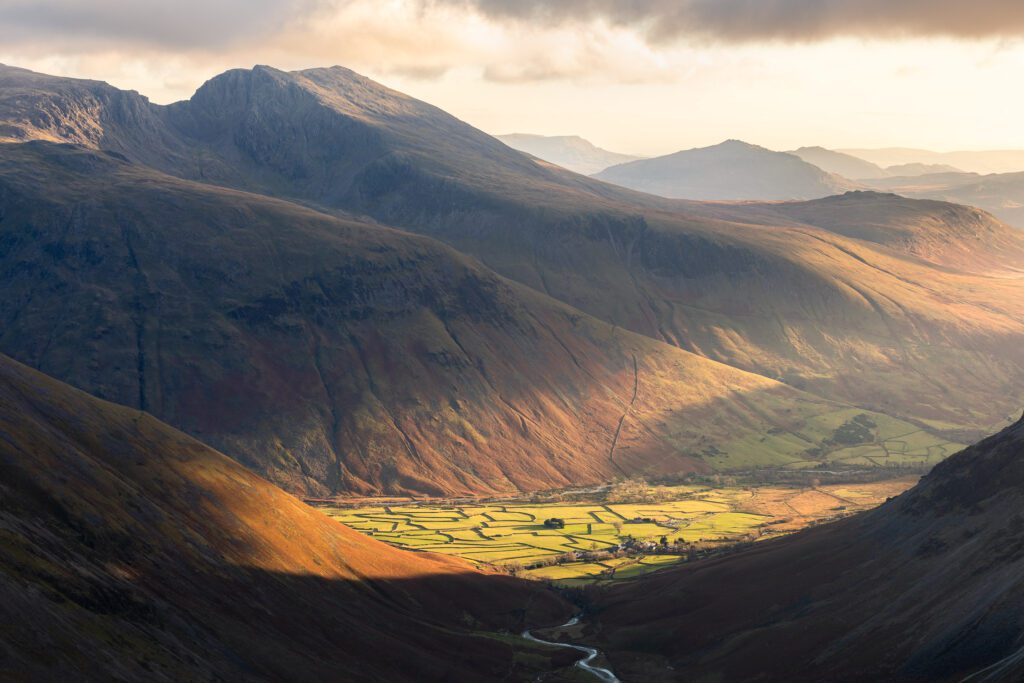
Tips For Landscape Photography On Pillar
Pay Attention to Weather Forecasts
First and foremost, pay very close attention to the weather. Landscape photography in the Lake District can be tricky at the best of times, the weather doesn’t always play ball and it certainly doesn’t always follow forecasts. With this in mind, be prepared for all weathers. Pillar is a mountain with spectacular 360-degree views. To make the most of the views, it is important to keep an eye on low cloud cover, haze, and fog. All of which can be problematic for landscape photography on Pillar. Very often you will find yourself swallowed up by low cloud which massively reduces visibility.
A Crucial Landscape Photography Tip: Look Back!
Look back! As you begin to tackle the slopes of Pillar, keep looking back along Mosedale Valley. You will not be disappointed by the view of the Scafells and beyond. With careful trip planning in the autumn and winter months, you can make the most of the stunning golden sunset light which passes along Wastwater, flooding Wasdale Head and the lower flanks of surrounding mountains.
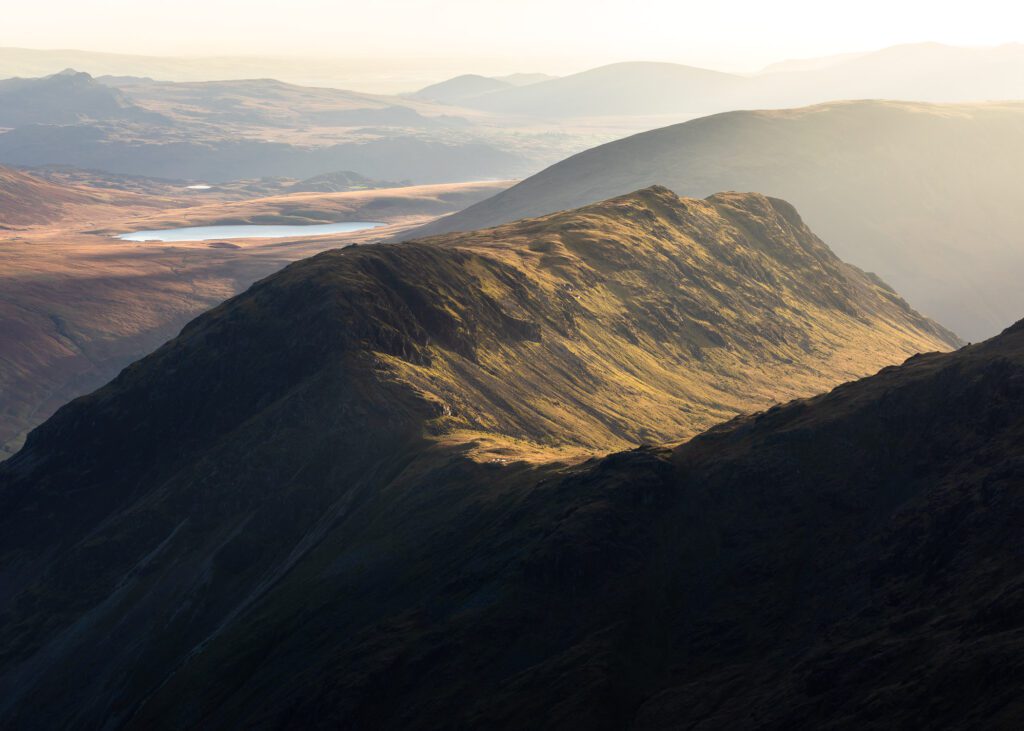
Research Your Route!
This advice applies to any trip to the Lake District. Research your ascent route in advance. Prepare for the worst weather conditions. Weather in the Lake District can change suddenly, so ensure you are covered for all possibilities. It is fairly common, especially with larger mountains, for low clouds to move in and reduce visibility. Please make sure that you are comfortable navigating with reduced visibility. Treat the mountains with the respect they deserve. England may not have the largest mountains in the world, but that doesn’t make them any less dangerous.
Holme Fell, All-Season Landscape Photography
Holme Fell is a landscape photography paradise. Well known amongst the photographic community for its sheer beauty. It’s quite rare to find a location that shines in all seasons, but Holme Fell does just that. If you’re a fan of silver birch trees, beautiful mountain backdrops, and iconic heather, Holme Fell is the place for you. With absolutely stunning 360-degree views, there’s so much potential for landscape photography. Of course, there are the honeypot shots, great to capture at least once. They’re honeypot shots for a reason! But, there’s also so much potential for unique photographs. It’s a beautiful location, some would argue too beautiful.
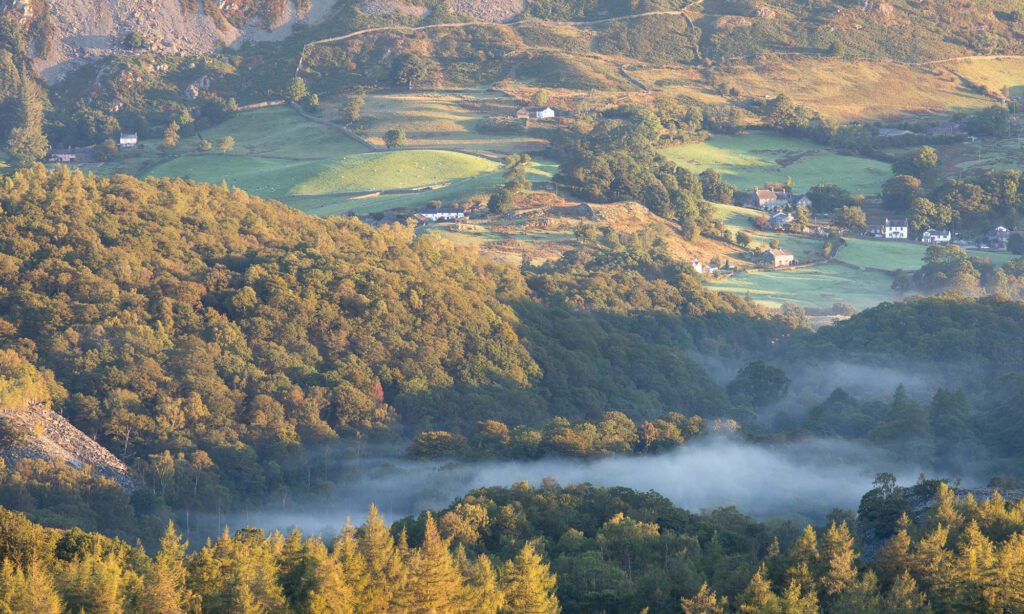
Accessing Holme Fell
Like many of the fells across the Lake District, Holme Fell is accessible from many directions. However, one of the more popular ascent routes is via Yew Tree Farm and/or Yew Tree Tarn. Parking is available at the Glen Mary Bridge National Trust car park, make sure you are there early! There is also a small layby along the A593 beside Yew Tree Tarn with space for 3 or 4 cars. The hike is fairly straightforward and will take 30-40 minutes from the car park. Take great care during the wetter months, exposed tree roots and wet rocks throughout the route can be challenging and dangerous to cross.
Tips And Tricks for Photographing Holme Fell
Set an Early Alarm
Yes, none of us truly enjoy waking up stupidly early. However, in this case, it is worth it! Holme Fell truly benefits from sunrise light. The iconic birch trees are a popular scene and during a sunrise, you can catch them beautifully backlit by sunrise light.
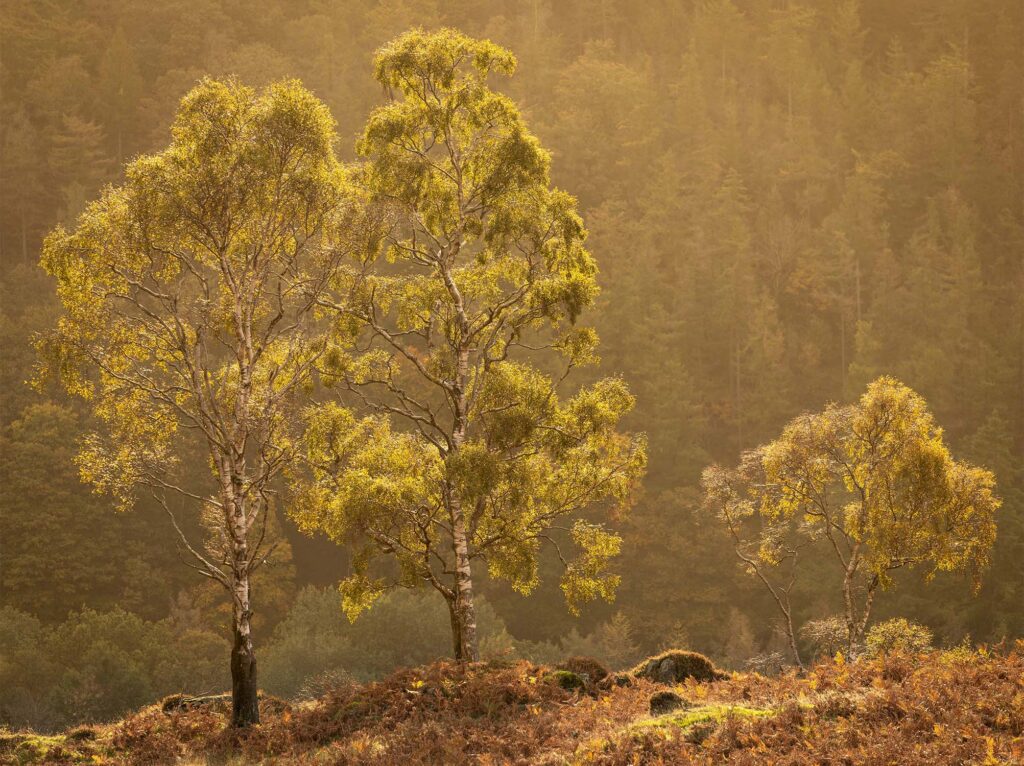
Visit During Different Seasons
Holme Fell shines all year round. It pays to visit at various times throughout the year and familiarise yourself with the environment as it adapts to changing seasons. The stunning silver birch trees come to life in early spring and autumn when their leaves display beautiful yellow hues. Also, during autumn months, be on the lookout for increased chances of mist and fog which can help to add atmosphere and simplify your landscape photography.
Don’t skip summer! The mountain heather (also known as Ling) surrounding Holme Fell is simply beautiful. Typically “heather season” begins late August through early September and doesn’t last long. For this reason, it is definitely recommended to keep tabs on the progression through online communities or friends so that you can catch it at its peak.
Winter up at Holme Fell is also spectacular, especially once the surrounding fells get their winter coats of snow. The hibernating silver birch trees and bracken offer great foreground potential when paired with snowcapped fells in the distance.
Lookout For Mist And Fog
Building on that mentioned above, Holme Fell is an amazing location to spend a misty or foggy morning. With such a vast viewpoint, you have both wide-angle and telephoto opportunities to photograph mist and fog as it gently moves through the valleys around you. Also, on those days when you get seriously lucky, diffused sunrise light breaking through the mist is guaranteed to have you running around like a headless chicken.
Mist, fog, and inversions are somewhat predictable. To find out how you can increase your chances of seeing these spectacular events, visit my previous blog post linked below where I talk you through the basics.
Blea Tarn. One Of The Best Locations For Landscape Photography?
Blea Tarn is a location that needs no introduction. It is a simply beautiful location that attracts landscape photographers throughout the year. Situated between the valleys of Great Langdale and Little Langdale, Blea Tarn is an incredibly accessible location offering spectacular views of the Langdale Pikes. Parking is available a stone’s throw away in the Blea Tarn National Trust car park. The opportunities for landscape photography are huge, you can stay at the tarn and capture amazing photographs featuring Side Pike and the Langdales. Or, you can venture up to Side Pike and Lingmoor Fell.
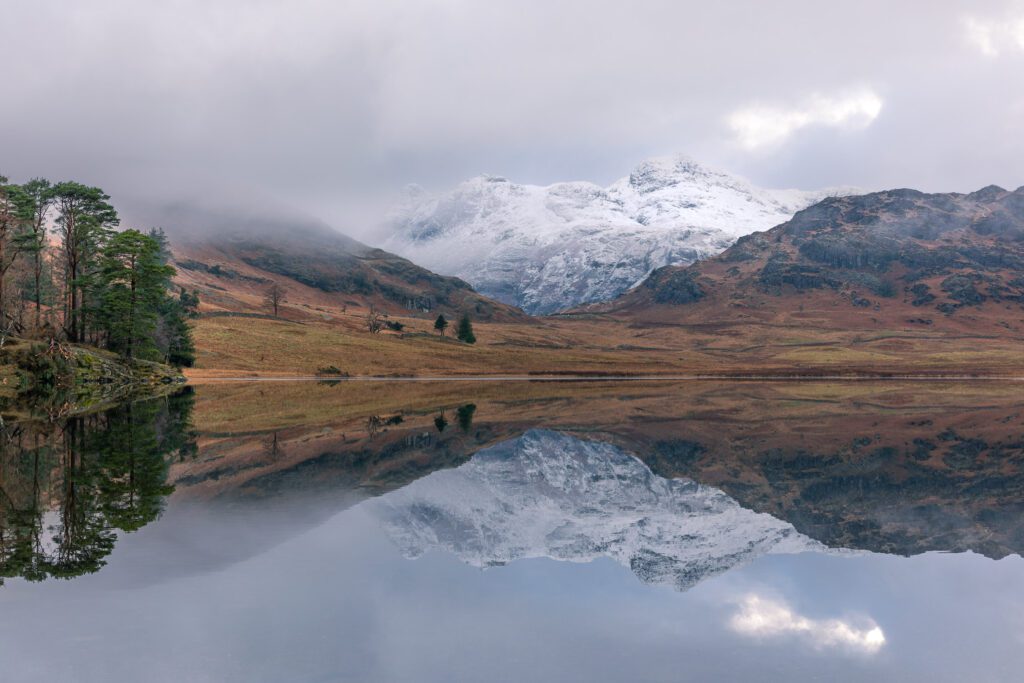
Accessing Blea Tarn
Unfortunately, the trade-off to such a beautiful location is that it is incredibly remote. To access Blea Tarn, you must tackle some narrow, single-track roads. However, it is well worth the effort. If you are on the road early, you should be able to avoid most, if not, all traffic. Be careful during the winter months, the final steep sections of road can be treacherous when icy. Once you reach Blea Tarn National Trust car park, simply exit the car park, walk across the road and through the National Trust gate to access Blea Tarn.
Tips And Tricks for Landscape Photography At Blea Tarn
Low Winds are Your Friend
I’m sure this will be pretty obvious but track the weather and visit during times of low winds. Low winds open up the opportunity to include reflections within your landscape photography. It’s honestly difficult to think of a location better suited to reflection photography. The Langdale Pikes and Side Pike reflected in mirror-like water are simply breathtaking. There are a few boulders scattered around the shore of Blea Tarn that can also be included in the foreground of your photography.
Venture Up Lingmoor Fell For Heather Season
Lingmoor Fell is renowned for its heather. In fact, it is named Lingmoor due to the fact that it is covered in heather (Ling). For a small fell, it’s quite a steep climb but honestly, it is well worth it. You’ll want to visit during heather season which typically falls between the mid-end of August and early September. The higher up Lingmoor Fell you go, the more the Great Langdale Valley opens up as you look across to the iconic Langdale Pikes. There are several honeypot locations dotted around Lingmore Fell but there is also huge potential for unique compositions. If you’re really lucky, during the extremely short duration of flowering heather, you might be able to capture a cloud inversion. Seeing the mountain heather during peak flowering whilst standing above the clouds lining the valley below is a spectacular sight. Landscape photography on Lingmoor Fell really is an absolute delight.
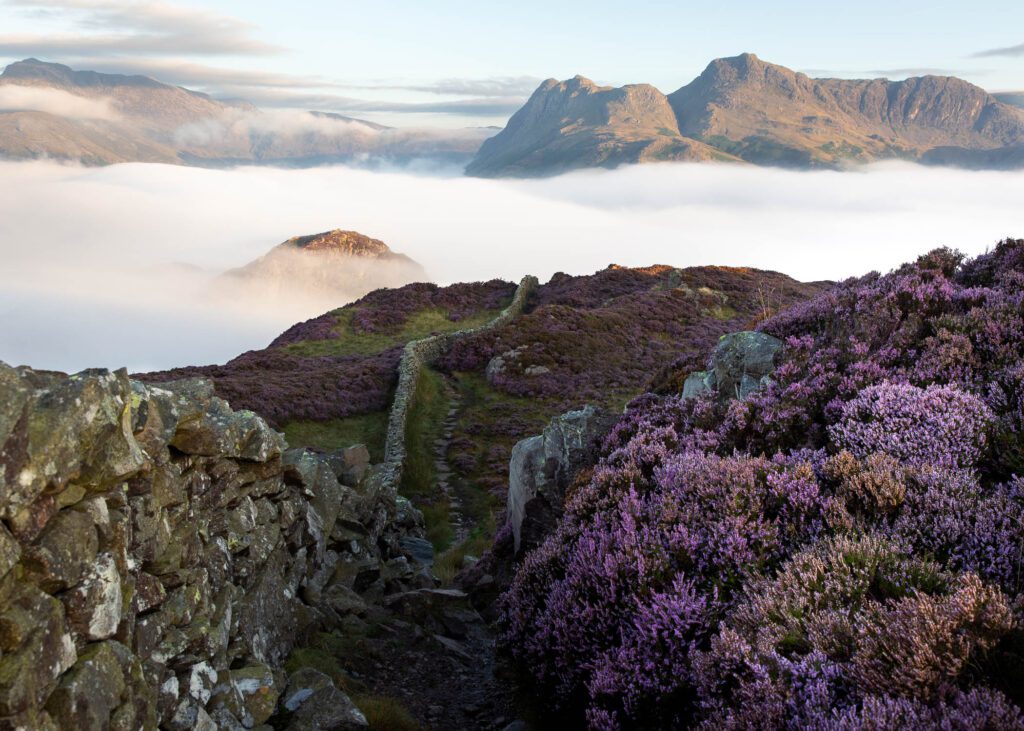
Of course, you can also visit Lingmoor Fell outside of the heather season. Look for dark moody skies and spectacular sunsets. Also, be on the lookout for dynamic weather conditions with high winds and rain which provide chances of capturing rainbows forming through Great Langdale Valley.
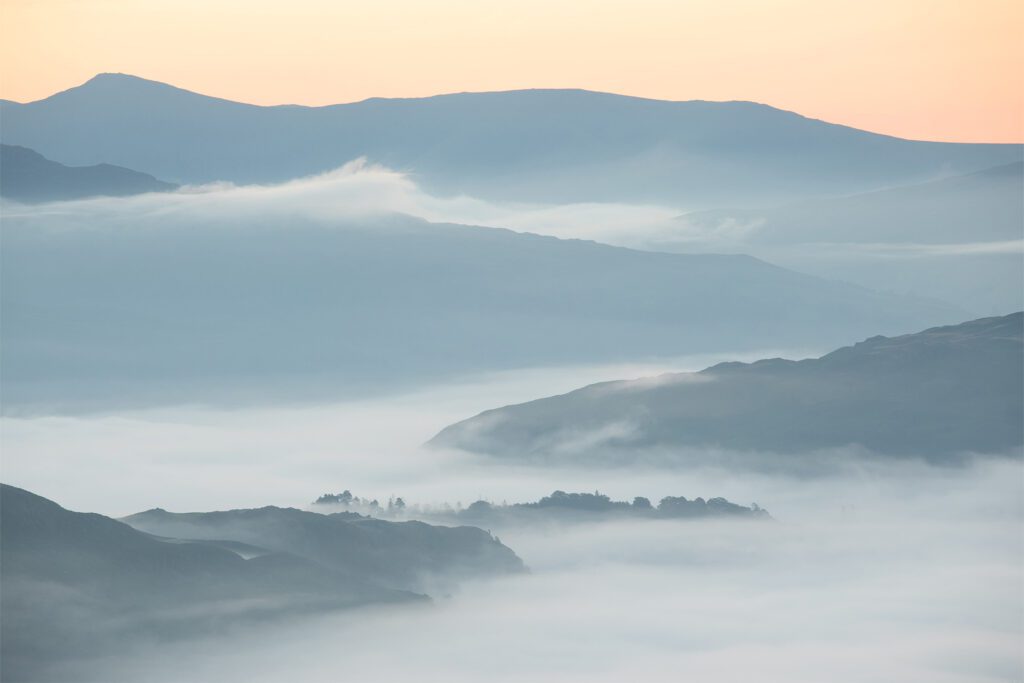
Summary of Lake District Landscape Photography
In short, the Lake District is a stunning location and offers endless opportunities for landscape photography. It can be a little daunting to choose an area to explore. Hopefully, the above offers a little guidance. When considering a location, it is worth asking yourself what features the location has. Do the features fit with the style you’re hoping to achieve? How accessible is the location? What are the best conditions or times of day or even year to visit the location?
That said, planning trips is a fun process and makes it well worth the time and effort when it pays off in the form of a successful trip. In no time at all, you will quickly begin to build a portfolio of locations that will keep you busy throughout the year!
If you haven’t visited the Lake District yet, what are you waiting for?
If there is anything I can help with, or you would like to know more about a specific location, please feel free to contact me using the link below.

